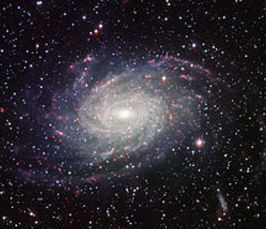"The many flavours of star cluster dynamics"
Munich Joint Astronomy Colloquium
- Date: Nov 24, 2016
- Time: 03:15 PM - 04:15 PM (Local Time Germany)
- Speaker: Michela Mapelli
- INAF - Astron. Observ. Padova
- Location: ESO
- Room: ESO Audit. Eridanus
- Host: ESO/MPA/MPE/USM

The Advanced LIGO (aLIGO) gravitational-wave detector this year reported the discovery of the first direct detection of gravitational waves confirming Einstein’s Theory of General Relativity in its extreme limit. All sources of these gravitational waves detected so far were caused by the merging of two massive stellar-mass black holes. In this talk I will first summarize the main aLIGO results and then discuss in detail the three main channels that have been proposed to explain their origin, involving (1) dynamical formation, (2)
common-envelope evolution, and
(3) chemical homogeneous evolution (CHE), and how it may be possible
to distinguish among these models.
I will then focus on the CHE
formation model, showing recent results from our own work, including
cosmological simulations and their implications for the future
detection of intermediate-mass black-hole
mergers, gamma-ray bursts, pair-instability supernovae and neutron-star/black-hole mergers. The model also has application to ultra-luminous X-ray sources, in particular the most luminous ones.